Dan Gibson explains his view of hadith, and why he uses them in his research.
Transcript
Are the Hadiths Trustworthy or even Useful?
Hello, I am Dan Gibson, and this is another video in the series Questions and Answers. This week’s question is about the hadiths? Are they trustworthy or even useful? and Why do I use them in my research?
These questions address a very complicated area of study, and whole books and careers have been based on the hadiths. So let me emphasize that I am not a scholar of hadith studies. But in order to give an answer, I don’t think I have to be. I think it is all about perspective.
First, a little bit of background. Modern Western analysis of Hadiths go back to a Hungarian scholar, Ignaz Goldziher who wrote in 1889. He was a skeptic, and he questioned the origins and nature of the Hadiths. And that set the tone for western scholars ever since then. Since most of the Hadiths were written in the 3rd century of Islam, Goldziher questioned the validity of the connection of the Hadiths with the age of the Prophet.
Goldziher was followed by Joseph Schacht in the 1950s, who wrote: Origins of Muhammadan Jurisprudence. He endorsed the skepticism expressed by Goldzihr about the historical link between the Hadiths and the person or even the time of the Prophet.
The most significant achievement of Schacht’s work was to make it clear that that link had not even been claimed in any consistent and systematic way by the Muslims until the idea was championed by the second-century After the Hijra scholar Shafi’i.
Now this brings up an important subject. As a historian I am more interested in the order that things took place, than the religious significance of the things themselves. I will try and explain this as I go along. Perhaps we need to start with a timeline, and trace the development that hadiths went through, rather than just talking about hadiths in general.
Timeline – I am going to use Hijri dates
132 AH Abbasid rule begins
144 AH Ibn Ishaq writes Sirat iRasul Allah - notice the writing of history began before the writing of hadiths. This is very fundamental and important. I will repeat it again:notice the writing of histories began before the writing of hadiths. Because we will ask the question: what came first, writing histories, or writing hadiths? The writing of histories came first, and the collecting and writing of hadiths was a second phenomena, based on the first.
148 AH Ja’far al-Sadiq, sixth Imam of Shi’ia He started a school of law, with around 4000 students. He is seen as the father of Sharia Law by some. He died in 702 CE. Possibly poisoned. Some say because he introduced the concept of Shariah Law, which the Caliphs at the time were opposed to.
This is a pivotal time in history. Ja’far al-Sadiq taught Abu Hanifah who began the Hanafi school of law, and he also taught Malik ibn Anas who was the founder of the Maliki School of law. Malik Ibn Anas taught Ash-Shafi‘i, who started his own school of law, but Shafi’i was a teacher of Ahmad ibn Hanbal of the Habbali school of Law.
So all four schools of Islamic law originated from Ja’far al-Sadiq. The reason for this, is that before Ja’far al-Sadiq’s time, the leaders of Islam judged cases themselves, or their governors judged cases. There was not any systematic method of deciding cases.
In pre-Hadith times, the rulers simply gave answers the best they could. During most of the Umayyad period, the administration of justice lay in the hands of the provincial governors and, in-so-far as special judges were appointed, these were merely the agents of their governors.
Different officials acting in different centers had dealt differently with similar questions. In some instances answers were given without reference to the Qur’an or the common practice of the other governors.
Here is an example:‘Abd Allah, son of Abu Hurayra, asked the son of ‘Umar whether fish that had been washed ashore by the sea could be eaten. He replied with a firm negative. But shortly afterwards, he asked for a Qur’an to be brought to him and there found a passage from which he was forced to conclude that he had given the wrong answer to the son of Abu Hurayra.
That was an example of how the leaders arrived at their conclusions.
Another story:Abu Sa’id reports, I was sitting in a group of Ansir when ‘Abdallah came in looking very frightened’. He said, ‘I asked to be allowed to see ‘Umar three times, but was not allowed in, so I went away. Later, ‘Umar asked me why I had not waited, and I said that I had asked three times to be allowed to see him and each time I was denied permission, so I went away, since the Prophet said once, “If you ask permission three times to enter and are not permitted to do so, go away”. ‘Umar rather strenuously insisted that I bring him confirmation of what I reported.
“Did any of you chance to hear the prophet say anything to this effect? ‘Ubayy ibn Ka’b said, in response to ‘Abdallah’s plea, ‘By God! only the youngest will accompany you’. Abu Sa’id said ‘Being the youngest present, I got up and went with him and informed ‘Umar that the Prophet had, indeed, said that’.
So at this time, the hadiths had not been gathered. So the rulers and governors were attempting to make decision, but were very conscious of wanting to make the correct decision according to what Muhammad had said or done.
The whole bases of hadith was this desire to emulate, or act similar to the prophet Muhammad. That desire goes far more than just trying to please what Muhammad would have wanted. It involved imitating the smallest details that Muhammad had done. Everything he said and everything he did had authority. This goes far beyond how the Catholic Church dealt with popes speaking ‘ex cathedra’ … or speaking as representatives of God himself.
In the case of Muhammad, everything he did was important. “Which way did he face when urinating?” was an important topic.
No one was trying to emulate a Catholic pope like that. Even Christians were not concerned with such details when following Jesus. But Muslims were doing everything they could to copy every aspect of their prophet’s life.
So when Ibn Ishaq came along, he wrote down the first biography of the prophet. This fascinated everyone because now a well researched story was finally established.
Then came Ja’far al-Sadiq and he started to systematize the stories to be used on a legal basis or a religious basis. Up until this time it is impossible to speak of a uniform sunna in Islam but Ja’far al-Sadiq laid the bases for what would later become Sharia Law, by formalizing accounts of what the prophet said and did. And he was not appreciated, and he was jailed and later poisoned.
But one of his students, al-Shāfiʿi built on the foundation of Ja’far al-Sadiq and al-Shāfiʿi is credited with creating the science of fiqh, or understanding the deep things of Islamic law.
And so some of the legal schools were formed before the hadiths that we know of today were written. Did you catch that? Look at the order below. These schools of law were formed before Bukhari and others published their hadith collections. But some of it was happening at the same time: the research and the establishment of the schools of law. Once a history had been written, there was this sudden interest in collecting hadiths.
150 AH Hanafi school opens
179 AH Maliki school opens
After this …
187 AH Al-Waqidi writes history
205 AH Shafi’i school founded
218 AH Ibn Hisham – publishes his edited history of Ibn Ishaq
241 AH Hanbali school founded
So far the great hadith collections have not yet been published.
It is not until 255, almost a hundred years after the Hanafi school of law was started that Bukhari publishes his collection!
255 AH Bukhari – Hadith published
261 AH Muslim – Hadith published
275 AHAbu Dawud – worked on it for 10 years, Hadith published
279 AHTirmidhi Hadith published
Not until a hundred years after al Shafi’is school was found did Al-Tabari publish his work.
308 AH Al-Tabari - Writes his history, but at the very same time he opens his own school of jurisprudence with an emphasis on understanding early Arabic language.
Remember that the Islamic religion and doctrine at this time was already been established. So al- Al-Tabari wasn’t going to ‘rock the boat’ as it were, he was writing with a view to support the status quo.
So we have a development… Islam did not begin with hadith. If I can say this: The development of Islam ended with hadith. Once hadiths were established there was no room to add or question or change anything in Islam.
So here is the development:
-First the early rulers and governors relied on people’s memories of what Muhammad said and did. These were remembered, taught, and used by others… all in an oral setting. But they struggled as the far reaches of the Muslim world spread farther and farther away. And as time marched on, there were fewer and fewer people whose memories reached back to Muhammad.
- Once the Abbasids took control, the first histories were written down.
- Then the schools of law were developed, still using the oral memories of people.
- Finally the hadith writers started collecting the oral hadiths and writing them down. These hadith writers were influenced by the already existing schools of law. Some of the hadtihs were used by specific schools of thought against others. Some hadiths were massaged and expanded so that they could address rival political, theological and legal programs.
Eventually the main method of trying to determine the authenticity of a specific hadith, was to examine the isnād, or the list of names attached to the hadith. But even this has problems, because some of the conflicting hadiths are ascribed to the same contemporaries of the Prophet. In some cases Hadiths became weapons of debate wielded upon all sides by the rulers and authorities. This is what caused Goldziher and others who followed him to become very skeptical of hadiths.
So were the hadith writers, writing history or only hadiths? Did they see themselves as writing religious texts, or simply writing histories that the legal people later latched onto and used for their own benefit? I think it is quite plain that the legal schools were based on oral hadith tradition, and the writing of hadith collections was done to serve these schools of law.
Now notice the difference between histories and hadiths. The difference is mostly in how the material is organized. Histories used isnād as well as hadiths. No, the difference is mostly on how the writers arrange things. Histories are arranged in chronological order, while hadiths arrange their material by subject or category. When you go to the hadiths, you have no sense of chronology. No attempt is made to place anything in chronological order. Rather, hadiths are arranged according to legal topics.
But in both cases they were looking back. Back to Muhammad and to the companions of the prophet.In fact it seems to me that in practice, much of the daily life of Muslims is based much more on hadith than Qur’anic texts.
The main reason why Hadiths were sought after was so that people could imitate the prophet. This was mostly about outward actions. For example after Muhammad died there was a great deal of discussion about how to wash after rising from sleep. A great deal of discussion took place about halal food, and also fasting, since fasting could be negated by what goes into the body.
In the end Muhammad’s life was examined in great detail, so that Muslims knew how to live. But …people remembered events differently. There were conflicting accounts of what Muhammad had said or done.
It is my opinion that if one takes hadith as a method of examining history, then we can learn a great deal about the early Islamic community and the issues they faced. If one is taking hadith only as religious text, for personal guidance, then problems arise.
My interest in Hadith is in history, not theology. I readily accept that the early Muslims struggled to define what their religion was all about. Once Muhammad had died, the community was left in turmoil. The Qur’an was not gathered, and the recounting of what he said and did was not written down. And the Qur’anic text was even in question at that time, as people tried to remember everything the prophet had said was revealed to him. Several attempts were made to collect all of the revealed words into one unified Qur’an. So for a time, everything was in flux.
Now, as long as the companions of the prophet were alive, people could revert to them and count on their memories. But when Ḥajjāj came along, he made such radical changes in Islam, that the companions of the prophet resisted, and Ḥajjāj killed most of them. So what is surprising is that no one attempted to gather and write down these saying for another hundred years! The writing down of the Hadiths seemed to be a great challenge! Perhaps because there was conflict between what people remembered. So many people had said so many things that they remembered that the prophet said or did. During this time, many internal wars had been fought, and hadiths were often quoted to support one side or the other.
During the second century of Islam, one side called themselves the ‘people of the sunna and unity’ and the others called themselves ‘ahl al-bayt’ or the family of the house of the prophet. But both sides made use of hadiths to support themselves. Eventually we would know these two sides as Sunni and the other Shi’a.
During this time, a new precedent was set when Umar declined to change decisions set by Abu Bakr. This soon developed into a systematic view of legal decision, based on past practices. So eventually decisions made by Abu Bakr and Umar, and Uthman made their way into hadith collections as well. But this was not extended to Mu’awiya and those after him. Just the first four caliphs.
Over time another important distinction was made. The hadith was the story or document itself, and the sunna was the practice or ruling that was inferred from the story. Soon there were varied sunnas for each hadiths stories.
On top of this, the practice of listing isnād or the chain of narrators was not known in the first century of Islam. As long as people were still alive who remembered what the prophet said, or who remembered what the companions of the prophet said, or who lived under the guidance of the first 4 caliphs, no one felt that a chain of narrators was necessary.
But in the centuries that followed, whenever people bickered about what the prophet said or did, they started saying who had told them this, and where that person had gotten his information, and where that person had gotten his information. This chain of communicators was called isnād. Some of the people named in the chain of communicators were considered more important or trustworthy than others.
The oldest surviving law book comes from Malik, who was a student of Ibn Ishaq. Malik leaves us with a total of 1,720 hadiths. Of these 600 were traced back to the prophet, 222 had incomplete isnāds, 613 go to the companions, and 285 were views of later scholars, and 61 had no isnād at all. Malik died in 179 AH, but he left us with the earliest book of hadiths. After Malik, many others started collecting hadiths, and a whole science of hadiths would develop.
What I find interesting here, is that the hadiths were born out of the histories. Ibn Ishaq writes a biography of the prophet so that people could have the story. But as soon as his writings are copied and circulated, certain people start to use the histories as hadiths.
This is an important point.What started out as history was soon grabbed by the religious and legal leaders and used in their arguments with each other. So collections of hadith started popped up at the beginning of the third century of Islam, not histories, and these hadiths became foundational to the emerging schools of Islam law, and became a source of contention as some of the hadiths disagreed with one another. And in some sense, the Muslim community lost some of their ability to think chronologically. Hadiths became far more important than history. And interpretations of hadiths given by local teachers became far more important to the individual Muslim than a personal understanding or conclusion reached by individuals themselves. That is a change that I see in Islamic history over this time. Even today people want to know what teacher told you that, not if you worked it out for yourself.
Now, in their quest for identifying authentic hadiths from those that had changed or developed over time, hadith experts established rules by which they could examine hadiths and classify them. In this way, Bukhari and others could eliminate the vast majority of hadiths that they heard from people.
One of the examples I have used in the past, are hadiths dealing with Noah’s Ark circling the Ka’ba before it ended up on the mountain. This was rejected by many hadith experts, yet when I examine the hadiths, I find that this hadith was among the earliest hadiths. Not attributed to the prophet, but to the companions of the prophet, most times to Ibn Abbas. (Azraqi 1:42).For me, this hadith seems to have originated in the preaching of Ibn Abbas and thus made its way into some hadith collections. By the third century it was considered weak and not acceptable.
In much the same way, there were hadiths of Muhammad preaching in a Roman bath-house, near to the Ka’ba. These hadiths were also deemed weak, and impossible, as there was no Roman bath-house in Mecca in Saudi Arabia.
That is why, when in 2014 when I was looking at the Ka’ba in Petra, I was surprised to see that the archaeologists had uncovered a Roman Bath-house only 135 meters (440 feet) east of the Petra Ka’ba. I could only shake my head in despair, as I remembered all those hadiths were rejected and lost because they did not fit what the hadith collectors thought was acceptable.
So what is my approach to the hadiths? I deal with them as history, not theology. In most of them, there is some grain of historical truth, that will help us understand the place and time when Muhammad lived. However, looking at hadith as the basis of theology is a problem that Muslims face, and have to decide about. But for outsiders like myself whose main interest is not in theology, the hadiths contain valuable information and clues about what was taking place historically during the lifetime of Muhammad and in the centuries that followed.
Now many of you have discovered by now, that I prefer the histories of Ibn Ishaq, Ibn Hisham, and al- Al-Ṭabarī. While these historians had some interest in hadiths, they were more interested in putting together a historical account of the life and times of the prophet in chronological order. Their writings tell us a lot about how people viewed history at the time they were writing.And it is clear that they appreciated that there were discrepancies in the historical accounts. That is the way history is. History always comes to us through the eyes of people who wrote down what was happening in their lifetime, or in a period of time just previous to them. Some historians also recorded what people knew of the ancient history before their time. But people didn’t get all worked up about them, because they were viewed as history, not religious hadith.
Let’s go back to Noah’s ark circling the Ka’ba. There are several hadiths about this. Why are they there? They are obviously not true, or virtually impossible to determine. Did they come from divine revelation? We have no record of that. So why were they included? Doesn’t this make everything else seem weaker?
That may be to our western mind, but it seems that these things were remembered from sermon Ibn Abbas preached. In the case of Noah’s ark, people remembered when Ibn Abbas gave this account as an illustration of how important the Ka’ba was all down through history. The story seemed significant and so it was repeated, and eventually it found its way o hadith collectors and they had to decide if it was worthy of being in their collection of hadiths.
Last week I received a letter in the mail from a lady who remembered that I came to their town 28 years ago, as was to speak to their church. I felt God wanted me to speak on the topic of the Body of Christ. And now 28 years later, she found my address, and wrote to me about that day, that message, and how it impacted her life. She remembered that sermon, 28 years later.
I think the hadiths about the Ka’ba and Noah’s Ark were like that. People who were there were struck by something, and they remembered it. And years later they told it to others, and they told it to others. And it eventually found its way into hadiths. And then, it was removed by the hadith collectors, who didn’t like this story of Noah’s ark for some reason or other.
And why was it removed. Because of history? Or because of religion?
Could Ibn Abbas actually have told this story as a sermon illustration? Did Ibn Abbas only speak the truth, 100% of the time? He was not a prophet. He wasn’t even a caliph.So why were his words considered for Hadith material? Because he was a companion of the prophet?
You see, it doesn’t bother me that he made have said it; because I do not think he was not laying down theological foundations. I think he was emphasizing a point, about how central the Ka’ba was.
This is the problem with hadith. The writers and listeners of hadith want theological foundations.
Historians, want to record events, as remembered by others.
That is why I am approaching the Hadiths as a historian. Not a theologian. My interest is not in the question: Does the Hadith provide accurate theological information? To me: Just because Ibn Abbas once preached a sermon where he used an illustration of Noah’s ark going around the Ka’ba in his sermon, to me doesn’t make that story a illegitimate part of Islamic history.
But the fact that so many people recorded very similar stories tells me that it was a common illustration used by other preachers in the first century of Islam. As a historian, I don’t think it should be thrown away, if it was a common thought at the time.
The same thing goes for the Christian early church fathers, and even the Gnostics. I do think the Gnostics and their writings were wrong, even deliberate falsification of the truth, and I don’t think anyone should base their theology on Gnostic teaching, but as a historian, they provide important background to what was taking place at the time. We should not throw them away because it helps us understand other things that were said and time at the time.
And so when we come to the hadiths, they have great value to a historian, who is trying to unravel what was happening at the time. We accept that there are multiple conflicting hadiths, because there were multiple conflicting groups within Islam at the time. Just read the histories of the first two centuries of Islam. It is filled with turmoil and infighting.
Unfortunately, today some people have a picture in their minds of some sort of solidarity and union of Islam in the early days. If so, I don’t think they have ever read Islamic history.
So if I know, from the histories, about the turmoil and trouble that existed at the time, should I not expect the hadiths to reflect that same turmoil and trouble?
I urge you to stop reading hadiths as theology, and start reading the hadiths as history. They give you very interesting glimpses into the thoughts of people during the opening centuries of Islam.
One example are hadiths that have to do with eating lizards. A lady once served a meal that had lizard meat in it. When the prophet was informed, he allowed people to eat it, even though he personally chose not to.
Back in 1980 I was out in the desert with a group of students, and we came across a large lizard, which they called ‘Abu Brace’ and we discussed that very hadith. Was it lawful to kill and eat Abu Brace? As long as there was a hadith that allowed them to do so, they felt freedom in themselves to eat lizard meat. For them it was a religious question. But the hadiths in Abu Dawud tell us that they are haram!
I study hadiths, not to find out about halal and haram, but to understand history. And I accept that people disagreed with one another.
For a modern example, take Covid 19. Today there are various and conflicting voices and opinions. Political leaders generally want us to accept one view. But in truth there are many views. One does not have to sit long in a local coffee shop to hear lots of different and conflicting views about the virus. As a historian, I want those conflicting views preserved in history. Not just the official government stance. If that is all we know, we will not understand much of the happening in history.
So as a historian I pay attention to the anomalies. Because I want to understand history, and uncover what people were thinking and wrestling with long ago.
And that is why I read the hadiths. Not for religious and theological guidance, but to understand the mindset of people at the time.
And so in my videos, I will continue to refer to the hadiths, because they illustrate to me what some people were thinking back then. And just as there were different and conflicting views back then, there are conflicting views in the literature that was produced.
Let me give you one example in closing of why preserving history is important.
Al Al-Tabari addresses an important issue:
When Abraham took his son up the mountain, to sacrifice him, and then God provided a replacement… which son did he take?
Al-Tabari writes about this in Volume 2, starting at page 85.And he provides us with 2 pages of hadith, with their isnād that insist that Muhammad said that it was Isaac that Abraham took to sacrifice. Isaac not Ishmael. Look it up in Al-Ṭabarī!
But then we come to a section at the bottom of page 86 that goes to the bottom of page 90, with hadiths and their isnād which say it was Ishmael who was to be offered.
Al-Tabari deliberately presents us with six pages of conflicting hadiths… some of them with the same isnād. Why does Al-Ṭabarī do this?
Because Al- Ṭabarī is recording history not theology. He was telling us that in his day, this topic was dividing people. And so like a good historian, he provides both sides of the argument.He is not trying to sway you to one side or the other. That is for the reader to decide.
And so I think that hadith collectors felt free to collect conflicting hadiths, because in their day both sides were held as correct by one group or another.
Topics of religion are topics of faith. You make your own decision. And you bear the consequences of your decision.
Topics of history are all about digging out facts. Al-Ṭabarī is telling us that they couldn’t decide in his day. So conflicting hadiths tells me that there was conflict about the topic back then. Remember the hadith collectors were 200 to 300 years removed from the fact, but already many topics could not be decided on the basis of hadith alone.
So I think hadiths are useful in telling us things. We can get solid information from conflicting hadiths if we view them as history, not theology.
I am Dan Gibson, and this had been my view on the hadiths.
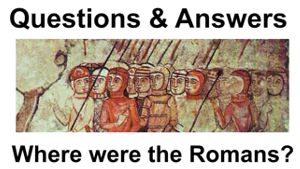


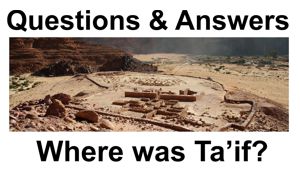


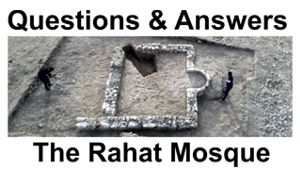

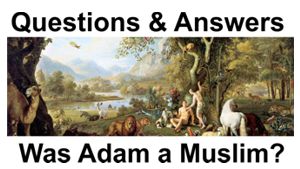

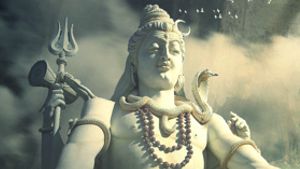


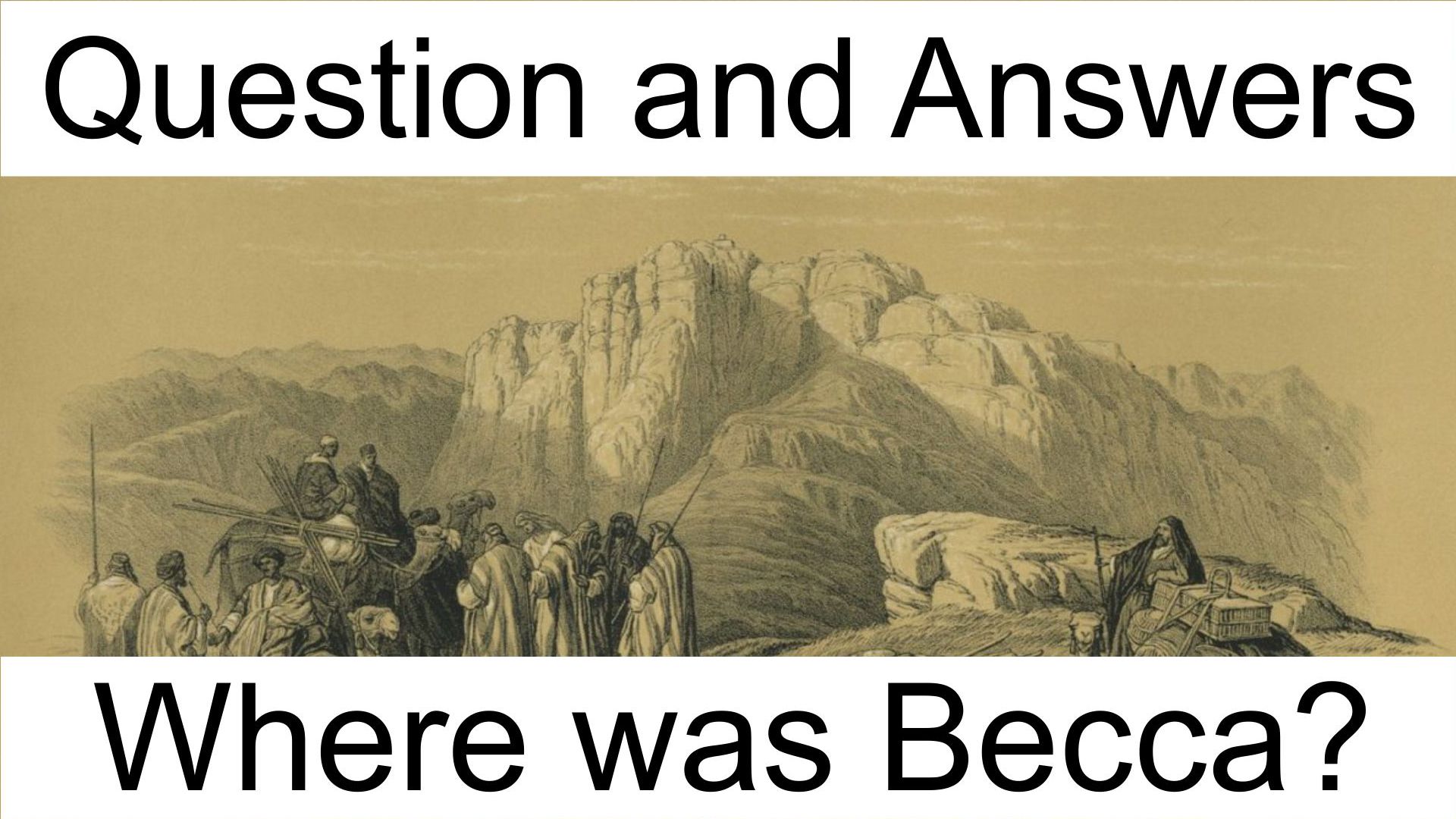

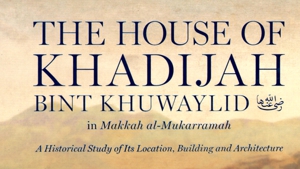
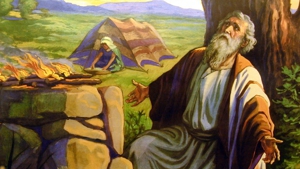
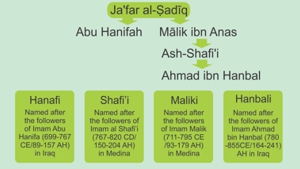

Page Discussion
Membership is required to comment. Membership is free of charge and available to everyone over the age of 16. Just click SignUp, or make a comment below. You will need a user name and a password. The system will automatically send a code to your email address. It should arrive in a few minutes. Enter the code, and you are finished.
Members who post adverts or use inappropriate language or make disrespectful comments will have their membership removed and be barred from the site. By becoming a member you agree to our Terms of Use and our Privacy, Cookies & Ad Policies. Remember that we will never, under any circumstances, sell or give your email address or private information to anyone unless required by law. Please keep your comments on topic. Thanks!